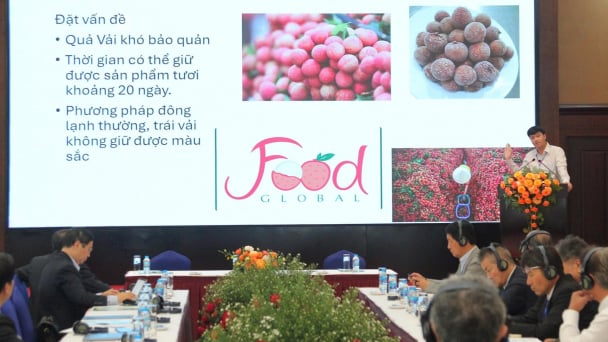June 14, 2025 | 22:47 GMT +7
June 14, 2025 | 22:47 GMT +7
Hotline: 0913.378.918
June 14, 2025 | 22:47 GMT +7
Hotline: 0913.378.918
According to the Ministry of Agriculture and Rural Development, the livestock sector recorded stable growth figures during the first quarter of 2024. The total output of live-weight meat within this quarter is estimated to reach 2 million tons, marking an increase of 4.5% compared to the corresponding period in 2023. Notably, pig farming continues to be the mainstay of the sector, accounting for 64% of the total domestic livestock production.
In addition to remarkable production results, output prices recovered significantly in the first four months of 2024. As of May 29, the farm gate price of live-weight pigs reached 70,000 VND per kilogram, marking the highest level within the last five years. This significant increase in price, particularly in April - a period typically marked by lower summer demand - is a rare occurrence.
According to the Mercantile Exchange of Vietnam (MXV), the domestic supply of live-weight pigs remained at a low level following the African Swine Fever (ASF) outbreak. Additionally, pig imports have decreased due to the narrowing price gap with pigs from Cambodia and Thailand. On the other hand, domestic businesses and livestock farming households are currently undergoing a restocking phase; and they will be unable to supply the market until at least the end of this year. Consequently, live-weight pig prices are expected to maintain a high level in the medium term, reinforcing the optimistic outlook for the livestock sector in 2024.
The stable growth trajectory demonstrated the significant development potential within Vietnam's livestock sector. Moreover, it showcased changes within the market structure following the implementation of policies aimed at supporting the expansion of businesses in place of small-scale livestock farming households.
According to the Ministry of Agriculture and Rural Development, the number of small-scale livestock farming farms has decreased by 15 to 20% over the last five years. Conversely, professional livestock households and farms currently account for 60 to 65% of total domestic production. This shift is an projected outcome as the livestock sector adapts and evolves following various challenges stemming from the COVID-19 pandemic. Additionally, integrated closed-loop pig farming has emerged as a core solution for sustainable development.
However, the challenges also highlighted the difficulties facing the Vietnam's livestock sector, as foreign businesses continue to dominate competition and gain further advantages. According to statistics compiled by the Ministry of Agriculture and Rural Development, Vietnam currently houses 265 animal feed production factories, including 85 foreign-owned facilities. These factories represent 32% of the total number of factories; however, they hold 65% of the market share.
One contributing factor is that foreign businesses typically employ structured business strategies and implement closed-loop production chains, thereby optimizing efficiency. Furthermore, domestic animal feed producers are less competitive due to their heavy reliance on imported raw materials. This dependency not only increases production costs but prevents domestic businesses from competing on price with foreign companies that have stable supply chains and lower costs.
Vietnam dedicates a substantial portion of its budget to the importation of animal feed raw materials every year. These imports, including corn, soybeans, and wheat, help to sustain domestic production. The livestock sector consumes over 33 million tons of feed annually, primarily for poultry and pig farming activities. However, domestic production can only fulfill approximately one-third of this demand.
According to customs data, Vietnam spent 498.82 million USD on importing animal feed and raw materials in April 2024, which is an increase of 6.7% compared to March 2024 and an increase of 34.8% compared to April 2023. In total, imports of the aforementioned items reached nearly 1.69 billion USD in the first four months of 2024, marking an increase of 9.8% compared to the corresponding period in 2023.
Key imported items such as corn, soybeans, and wheat saw a significant increase in volume compared to the first four months of 2023. However, the growth rate of raw material import value stagnated, as global agricultural prices followed a sharp downward trend between 2022 and late February 2024.
The Mercantile Exchange of Vietnam reported that despite the favorable market scenario for livestock businesses, created by the increase in output prices coupled with reduced raw material costs, the livestock sector is expected face considerable challenges in the near future. Import demand is forecast to experience a slight increase in 2024, whereas global agricultural prices have shown signs of reversal, experiencing significant fluctuations in the past month.
The prices of chicago corn and wheat have recently surged to their highest levels since late August 2023. This upward trend is expected to continue into the foreseeable future as concerns regarding supply shortages in major producing countries mounts. Notably, the recent frost impacting Russia's wheat harvest, coupled with the risks as crops in the United States enter a pivotal growth phase, is a major contributing factor to this price increase.
According to Pham Quang Anh, General Director of the Center for Vietnam Mercantile News, businesses must implement several key measures to address the rising costs of animal feed raw materials.
Firstly, businesses should proactively explore new supply sources and adjust feed formulations to utilize alternative products when raw material prices rise. Namely, wheat or cassava chips can be used in place of corn, reducing dependency on a single type of raw material and enhancing flexibility in production.
Secondly, businesses need to increase investment in oil pressing facilities to secure the supply chain of soybean meal, a high-value and irreplaceable ingredient. Vietnam can potentially import whole soybeans for oil extraction; thereby producing soybean meal for animal feed, soybean oil for food, and soybean hulls for dairy cow feed. This approach can stabilize supply as well as enhance the value added of domestic products.
Thirdly, businesses should utilize price hedging tools when importing animal feed ingredients to mitigate the risk of rising raw material costs. Consequently, these financial instruments will enable businesses to stabilize input costs amidst international market fluctuations.
Translated by Nguyen Hai Long

(VAN) The UNESCO Global Geopark revalidation of Non nuoc Cao Bang and the transition to a two-tier administrative model are presently undergoing a pivotal moment in Cao Bang, the northernmost province of Vietnam.
/2025/06/13/5330-2-004539_953.jpg)
(VAN) Changing policy mindset and removing investment barriers are urgent requirements to open up new development space for enterprises in the agricultural sector.

(VAN) The areas include the restoration of five million hectares of marine ecosystems.

(VAN) Dr. Le Van Nguyen, Director of the Institute of E-Commerce Management (ECM), emphasizes the potential for green development through the cultivation of fruit trees, particularly in provinces such as Son La.

(VAN) VAAS and numerous Vietnamese enterprises have signed cooperation agreements with Japanese partners to promote agricultural technology and trade connectivity.
/2025/05/29/5625-12-214801_567.jpg)
(VAN) Provincial mergers in the Mekong Delta promise to streamline administration, expand inter-provincial raw material areas, and foster close linkages in agricultural value chains, benefiting both businesses and cooperatives.

(VAN) Merging Mekong Delta provinces contributes to the expansion of agricultural raw material areas, addressing previous constraints caused by provincial boundaries. Additionally, this expansion will reduce costs and strengthen linkages between businesses, cooperatives, and farmers.